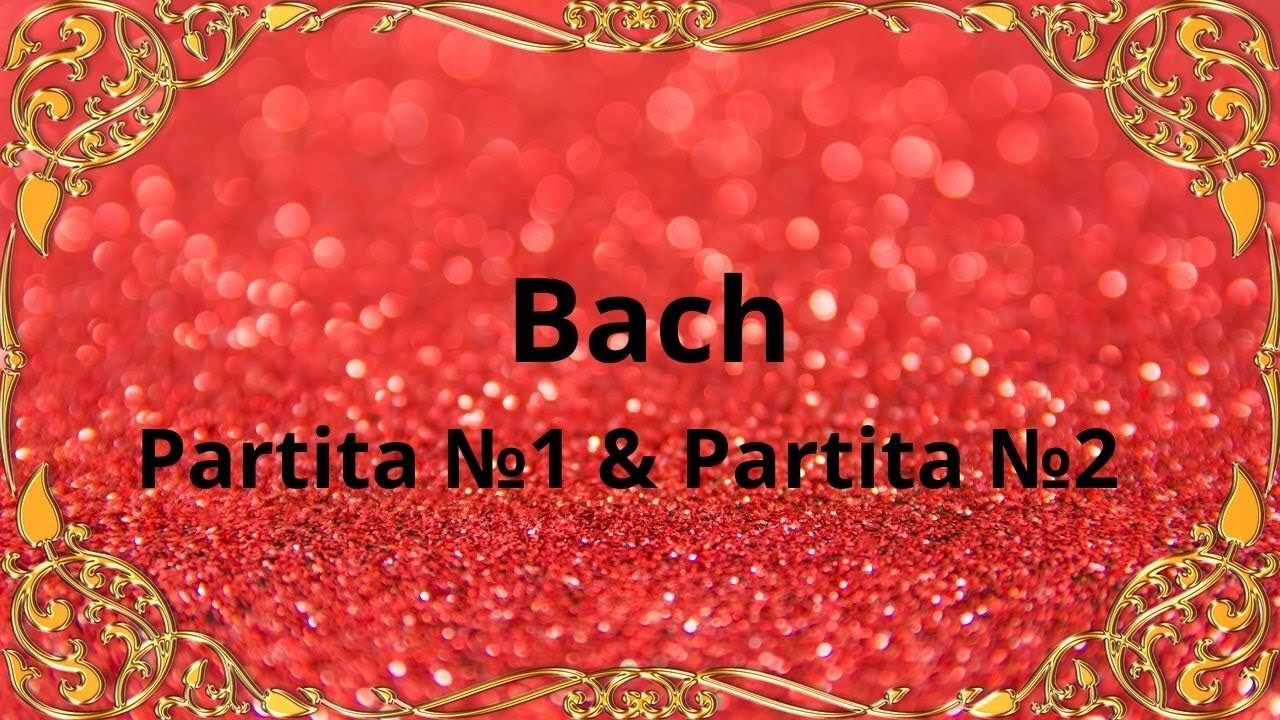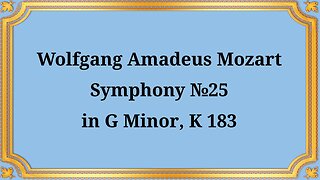Premium Only Content

BACH Partita №1 In B flat Major BWV 825 & Partita №2 In C Minor BWV 826
Johann Sebastian Bach, a towering figure of the Baroque period, composed a remarkable set of keyboard works known as the Partitas. Among these, Partita No. 1 in B-flat Major BWV 825 and Partita No. 2 in C Minor BWV 826 stand out as shining examples of Bach's genius.
Bach composed the Partitas in the early 18th century, during his tenure as Kapellmeister in Cöthen. These keyboard suites were created to showcase the virtuosity and expressiveness of the harpsichord or clavichord. Partita No. 1 and Partita No. 2 were published in 1726 as part of Bach's "Clavier-Übung," a collection of keyboard works. These Partitas demonstrate Bach's mastery of various dance forms popular during the Baroque era.
Both Partita No. 1 and Partita No. 2 consist of a series of dance movements, each with its own distinctive character. The Partita No. 1 comprises seven movements, including a Praeludium, Allemande, Corrente, Sarabande, Menuets, and a Gigue. Partita No. 2 consists of eight movements, including an Sinfonia, Allemande, Courante, Sarabande, Rondeaux, Capriccio, and a Gigue. These dance forms showcase Bach's versatility in composing various rhythmic patterns and tempos.
Bach's Partitas demand technical dexterity and interpretive skill from the performer. They encompass intricate fingerwork, ornamentation, and contrapuntal textures, which highlight Bach's exceptional command of composition. Beyond their technicality, the Partitas also exhibit emotional depth and expressiveness. Bach skillfully conveys a range of moods, from joyful exuberance to melancholic introspection, through subtle changes in dynamics, phrasing, and harmonic progression.
Bach's genius is evident in the seamless integration and overarching unity of the Partitas. Each movement serves as a part of a cohesive whole, with recurring motifs and thematic connections that bind the entire work together. This meticulous attention to structure and design allows the listener to experience the Partitas as a complete musical journey, showcasing Bach's mastery of musical architecture.
Bach's Partitas have left an indelible impact on the world of classical music. They have become a cornerstone of keyboard repertoire, frequently performed and studied by pianists and harpsichordists worldwide. The technical challenges presented by the Partitas continue to inspire and push performers to new heights of virtuosity. Furthermore, their profound musicality and emotional depth make them beloved by listeners and serve as a testament to Bach's timeless genius.
Johann Sebastian Bach's Partita No. 1 in B-flat Major BWV 825 and Partita No. 2 in C Minor BWV 826 are shining examples of his musical brilliance. These keyboard suites exhibit Bach's mastery of dance forms, intricate compositional techniques, and expressive depth. Their enduring popularity and profound impact on the classical music landscape attest to their timeless beauty and Bach's unparalleled genius.
Partita №1 In B flat Major BWV 825
I-Praeludium 00:00
II-Allemande 02:04
III-Corrente 05:29
IV-Sarabande 08:22
V-Menuets I & II 16:32
VI-Giga 19:19
Partita №2 In C Minor BWV 826
2.1 21:47
2.2 26:09
2.3 28:07
2.5 30:13
2.6 31:38
#classical_music #Bach #Partita
-
 16:53
16:53
Classical music_Music Inspiration
27 days agoWolfgang Amadeus Mozart Symphony No. 25 in G minor, K. 183
421 -
 LIVE
LIVE
Flyover Conservatives
21 hours agoFrom Cool to Cringe: How Democrats Lost America’s Ear | FOC Show
256 watching -
 8:19
8:19
MattMorseTV
7 hours ago $0.90 earnedTrump is ACTUALLY DOING IT.
3.82K19 -
 LIVE
LIVE
ZWOGs
9 hours ago🔴LIVE IN 1440p! - Tarkov w/ Casey & crgoodw1n, Kingdom Come Deliverance, & More - Come Hang Out!
76 watching -
 LIVE
LIVE
We Like Shooting
13 hours agoWe Like Shooting 625 (Gun Podcast)
116 watching -
 1:45:02
1:45:02
Glenn Greenwald
4 hours agoIsrael Slaughters More Journalists, Hiding War Crimes; Trump's Unconstitutional Flag Burning Ban; Glenn Takes Your Questions | SYSTEM UPDATE #504
87.9K86 -
 1:29:31
1:29:31
Killerperk
1 hour agoRoad to BF6. Come hang out #regiment #bf6
1.35K1 -
 LIVE
LIVE
Jokeuhl Gaming and Chat
2 hours agoDARKTIDE - Warhammer 40k w/ Nubes Bloobs and AoA
40 watching -
 LIVE
LIVE
Cripiechuccles
3 hours ago😁💚💙MOTA MONDAY WITH CRIPIE💚💙 👌SMOKING, GAMING & WATCHING FLICKS!:😁
37 watching -
 36:11
36:11
Stephen Gardner
2 hours ago🔥'Burn ALL TRUMP FLAGS’ says Tim Walz + Democrat CAUGHT rigging own election!
9.58K8